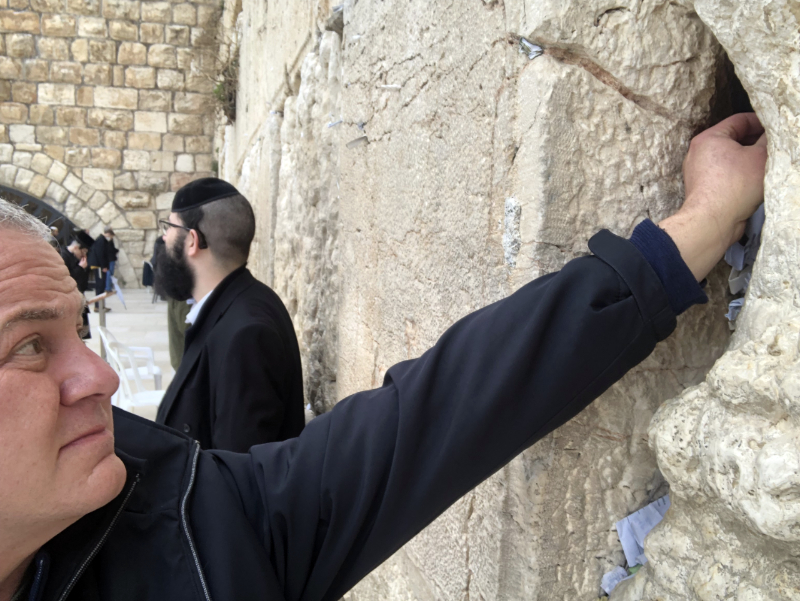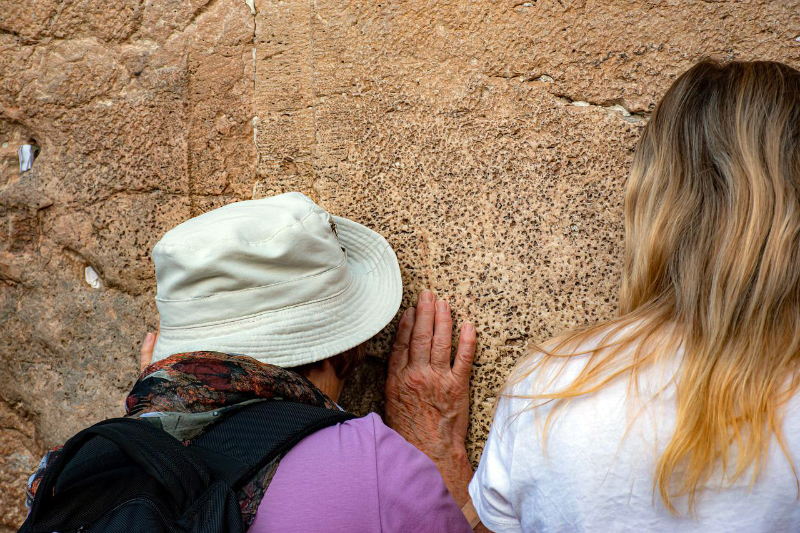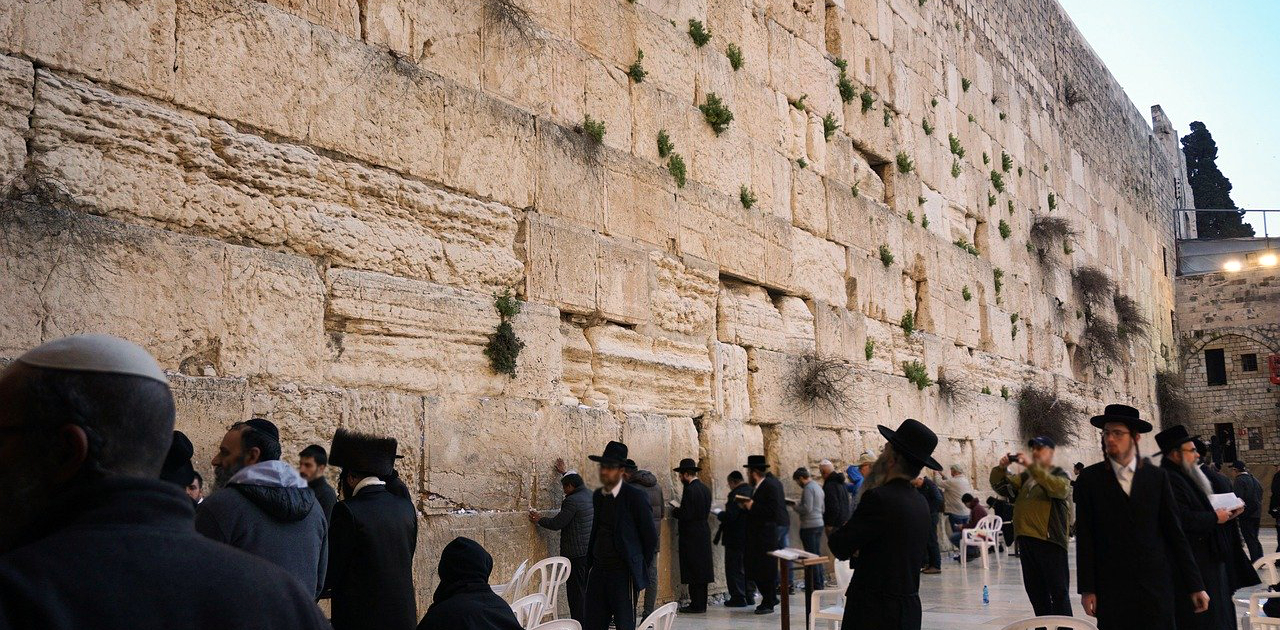A very special stop in Jerusalem on every Faith Connections Travel Holy Land itinerary is the Western Wall. It is the visible section of the west side of the Temple Mount platform. There is a plaza area marked out in front of the wall, and a partition inside separates the men’s and women’s sections. The complex is officially an outdoor synagogue with a rabbi and appropriate synagogue protocols. It is one of the most holy locations in Jewish tradition because the wall section is just below (and slightly to the south) of where the Temple stood, including the Holy of Holies that was located at the western end of the Temple building.
Given the deep historical and spiritual importance of the Western Wall to the Jewish world and its centrality to Jews as a place of pilgrimage and prayer, its significance is not lost on Christians. It is deeply meaningful to enter this holy precinct and to join in prayer with pilgrims from near and far who have come for millennia to worship and pray to the Lord revealed in the scriptures. As Christians, we pray to the One revealed ultimately in Jesus Christ, whose sacrifice fulfilled the Temple worship once conducted so nearby.

Why pray at the base of the wall when up on the Temple Mount itself seems a more logical place to carry on this devotion? The Temple Mount is governed and controlled by Islamic authorities. Jews are prohibited from entering the area on the Temple Mount platform, and any visible acts of worship, prayer, or even religious group gathering that are not Muslim are forbidden. Christians are permitted to go up onto the Temple Mount as tourists as long as no outward expressions of faith are made. The Western Wall plaza below is the closest that one can otherwise get to where the ancient Temple stood, and so it serves as as the holy place to which so many look today.

A well known tradition at the Wall is the leaving of slips of paper with written prayers tucked into gaps in the stones. Pilgrims have practiced this for centuries, and I enjoy doing this myself as well as carrying and placing the prayers of others from back home. On each of my pilgrimages, I make it known that I will carry a prayer to the Wall for anyone who wants to write one on a slip of paper. I ask that they be folded up tightly, and I never read them. On the day we visit the Western Wall, I place them one by one between the stones, praying for the individual who wrote each one as I do (although it is a general prayer since I don’t know who the specific author of a given written prayer is).

There is nothing magical about any of this, but it is nonetheless meaningful. The place has so much significance in the story of the people of God and in the heritage of our faith that a spiritual connection comes alive for me that happens in few other places. Standing there beneath the place once occupied by the Holy of Holies reminds me in a powerful way that God’s presence does fill the earth. Standing side by side with other pilgrims, most of whom I don’t know and will never meet, connects me to the reality that the prayers of my heart for the mercy of God are prayers shared far beyond my own community in North Texas. And worshiping God on ground where centuries of tears have fallen helps me to feel the compassion that I can lose so easily wearing the cold armor that seems so necessary in order to survive in these days.


